- News
- Reviews
- Bikes
- Components
- Bar tape & grips
- Bottom brackets
- Brake & gear cables
- Brake & STI levers
- Brake pads & spares
- Brakes
- Cassettes & freewheels
- Chains
- Chainsets & chainrings
- Derailleurs - front
- Derailleurs - rear
- Forks
- Gear levers & shifters
- Groupsets
- Handlebars & extensions
- Headsets
- Hubs
- Inner tubes
- Pedals
- Quick releases & skewers
- Saddles
- Seatposts
- Stems
- Wheels
- Tyres
- Tubeless valves
- Accessories
- Accessories - misc
- Computer mounts
- Bags
- Bar ends
- Bike bags & cases
- Bottle cages
- Bottles
- Cameras
- Car racks
- Child seats
- Computers
- Glasses
- GPS units
- Helmets
- Lights - front
- Lights - rear
- Lights - sets
- Locks
- Mirrors
- Mudguards
- Racks
- Pumps & CO2 inflators
- Puncture kits
- Reflectives
- Smart watches
- Stands and racks
- Trailers
- Clothing
- Health, fitness and nutrition
- Tools and workshop
- Miscellaneous
- Buyers Guides
- Features
- Forum
- Recommends
- Podcast
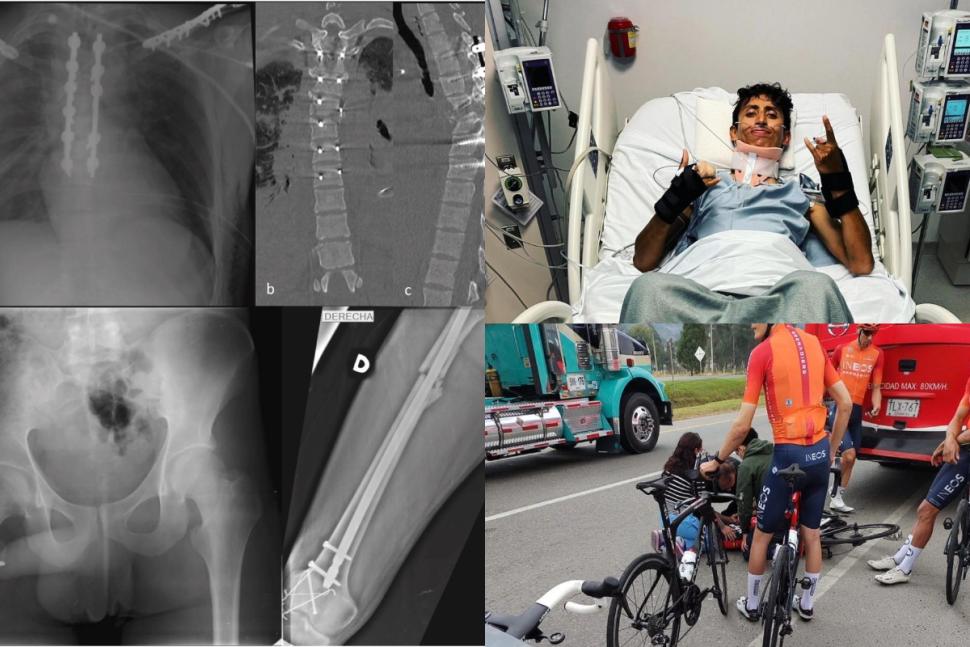 Egan Bernal recovery from horror crash detailed in medical paper (credit: Journal of Orthopaedic Reports)
Egan Bernal recovery from horror crash detailed in medical paper (credit: Journal of Orthopaedic Reports)Egan Bernal's recovery from life-threatening horror crash detailed in medical research paper
Egan Bernal's remarkable recovery from a potentially life-threatening training crash, back to the heights of WorldTour racing, has been studied as part of a newly published medical research paper.
The Ineos Grenadiers climber and 2019 Tour de France winner suffered a horrific crash while training on his Pinarello time trial bike at home in Colombia at the start of 2022. Bernal's list of injuries was frightening and included fractured vertebrae, a fractured femur, chest trauma and a punctured lung, the then-reigning Giro d'Italia winner having crashed into a parked bus at high speed.
Two weeks later a defiant Bernal was discharged from hospital, acknowledging "he almost died... [but] I'm back! Let's rock!" His return to racing came eight months later, at the Tour of Denmark, the Colombian having since raced the Tour twice and enjoyed his first post-crash victories as he was, in February of this year, crowned his country's national champion on the road and in the time trial.
It has been an already long road just to return to competition at the highest level of cycling, an extraordinary rehabilitative story considering the injuries Bernal faced and one that has now been recounted in a medical paper in the Journal of Orthopaedic Reports.
Titled 'Polytrauma in a professional cyclist: A successful case of timely management, rehabilitation, and rapid return to high-level competition', the paper details the injuries suffered, as well as the treatment and recovery process.
The paper reveals that Bernal was admitted to hospital with an Injury Severity Score (ISS) of 41 points. This is an established medical score which assesses trauma severity out of six across nine body regions. While 54 would therefore be the maximum, a full score of six refers to trauma that is currently untreatable, further emphasising the critical nature of Bernal's condition upon admission.
The paper continues: "He was managed by a multi-disciplinary team composed of surgical and clinical staff from the institution, emphasising the early initiation of physical rehabilitation as a cornerstone of management and one of the key lessons learnt from the case.
"The importance of effective teamwork, the establishment of rapid response plans for such scenarios, and the timely integration of rehabilitation as a fundamental aspect of care, alongside surgical and medical practices, is highlighted. The result was a successful case, bringing about total physical rehabilitation with no sequelae for the patient, who, furthermore, returned to the highest levels of international competition seven months later."
The research also outlines Bernal's case as one of "polytrauma" a term usually meaning: "Injuries suffered from a high-energy trauma which affects two or more organ systems accompanied by an Injury Severity Score (ISS) of more than 16 points, successfully predicting a mortality rate of >10 per cent."
Bernal is also revealed to have been travelling at approximately 60km/h when his crash occurred, the case having sparked discussion about the safety of using time trial bikes on open roads during training (not least from Chris Froome), although Bernal later downplayed any calls for them to be banned, saying TT bikes are "a part of cycling" and "accidents happen".
"Vital signs upon arrival were as follows: blood pressure 131/58 mmHg with a mean arterial pressure of 82 mmHg, heart rate of 120 beats per minute, respiratory rate of 35 breaths per minute with a Glasgow Consciousness Score of 15/15," the paper states. "On primary evaluation, the airway was patent and tenderness along the midline of the cervical spine was noted; a Philadelphia collar was applied."
Included X-ray images show fractures to one of Bernal's fingers, his femur, a displaced patella fracture and ribs, with CT scans also showing thoracic spine injuries. He was treated at the intensive care unit and required surgery.
"Cycling injuries can threaten sporting careers, and in most cases, require careful, time-sensitive management and rehabilitation," the paper's discussion begins, highlighting specifically the knee injury, femur fracture and spinal injuries as the most likely to impact Bernal's return to professional cycling.
It concludes: "To the best of our knowledge, this is the first case report to highlight polytrauma management and rehabilitation in a professional cyclist."
Bernal's 2025 season began with more injury rehab after he broke his collarbone at Clásica Jaén, although he was spotted back on his bike on Col d'Èze just six days later and last week returned to racing, finishing seventh at Volta a Catalunya. He is expected to target the Giro d'Italia and Vuelta a España this season.
Dan is the road.cc news editor and joined in 2020 having previously written about nearly every other sport under the sun for the Express, and the weird and wonderful world of non-league football for The Non-League Paper. Dan has been at road.cc for four years and mainly writes news and tech articles as well as the occasional feature. He has hopefully kept you entertained on the live blog too.
Never fast enough to take things on the bike too seriously, when he's not working you'll find him exploring the south of England by two wheels at a leisurely weekend pace, or enjoying his favourite Scottish roads when visiting family. Sometimes he'll even load up the bags and ride up the whole way, he's a bit strange like that.
Latest Comments
- Nick T 1 sec ago
And yet, North America (not just the USA) is such a marginal market for Shimano
- Mr Blackbird 16 min 38 sec ago
"At the going down of the sun, it will get in our eyes and cause us to crash into things."
- Rendel Harris 24 min 56 sec ago
Been living in the area thirty years now and Brixton Cycles (and local riders wearing their famed Rastafarian colours jersey) has been an iconic...
- Rendel Harris 33 min ago
There will be a delay with anything the human brain is asked to process, but the Varia identifies hazards up to 140m away and shows them on the...
- chrisonabike 2 hours 29 min ago
Does the "super-loud yellow" also help alert (non-deaf / non-earbud-wearing) pedestrians? Or will it just mean dogs bark at me?
- Festus 3 hours 20 min ago
One thing that bothers me is the use of antidepressant med and driving, it never gets picked up by police. Most of these types of medicines state...
- chrisonabike 5 hours 20 min ago
Indeed - but again these are perhaps questions we should keep asking. Even if the immediate answer is "well we are where we are" or "how on earth...
- wtjs 7 hours 7 min ago
Then smash bad driving behaviour very hard...
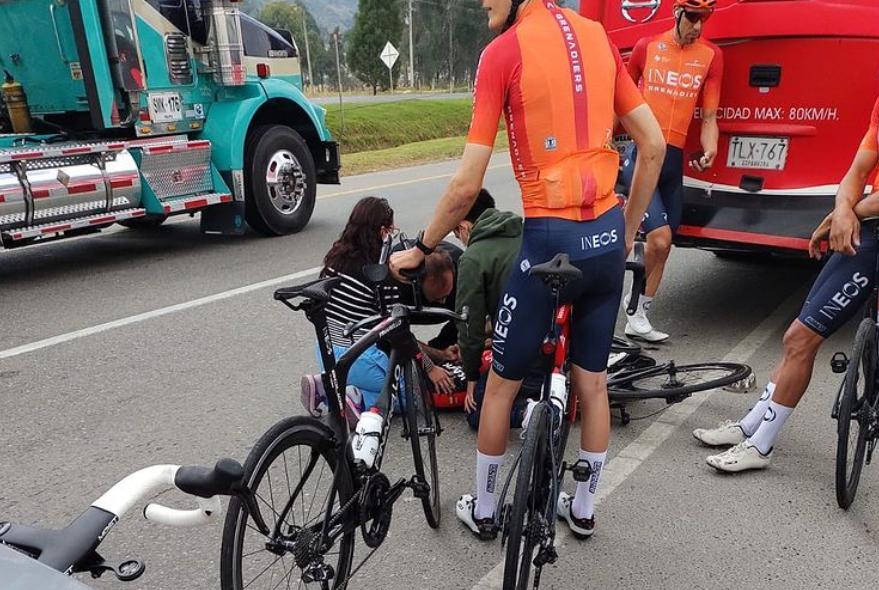
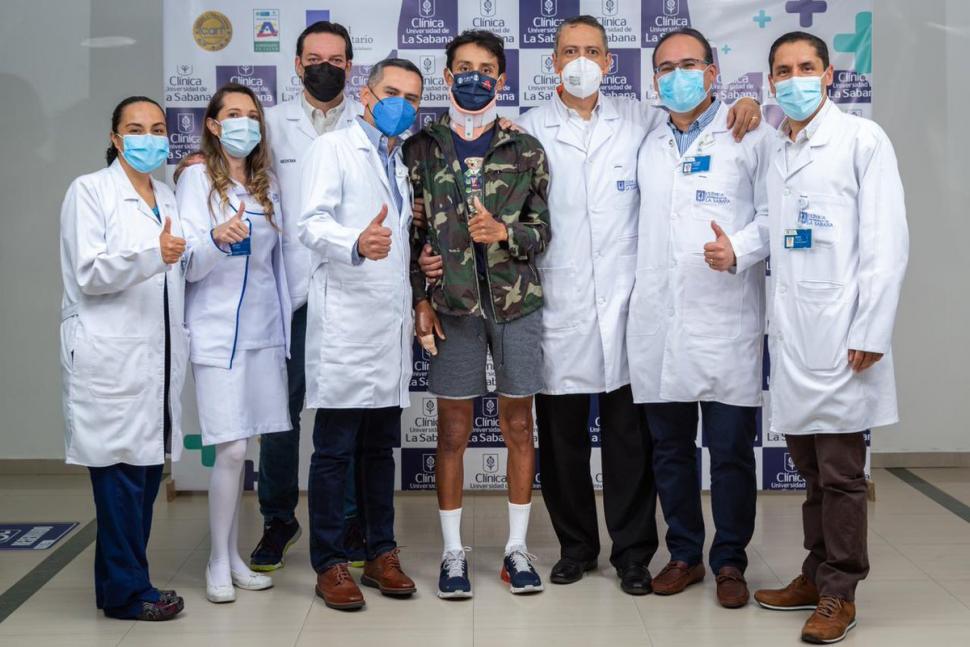
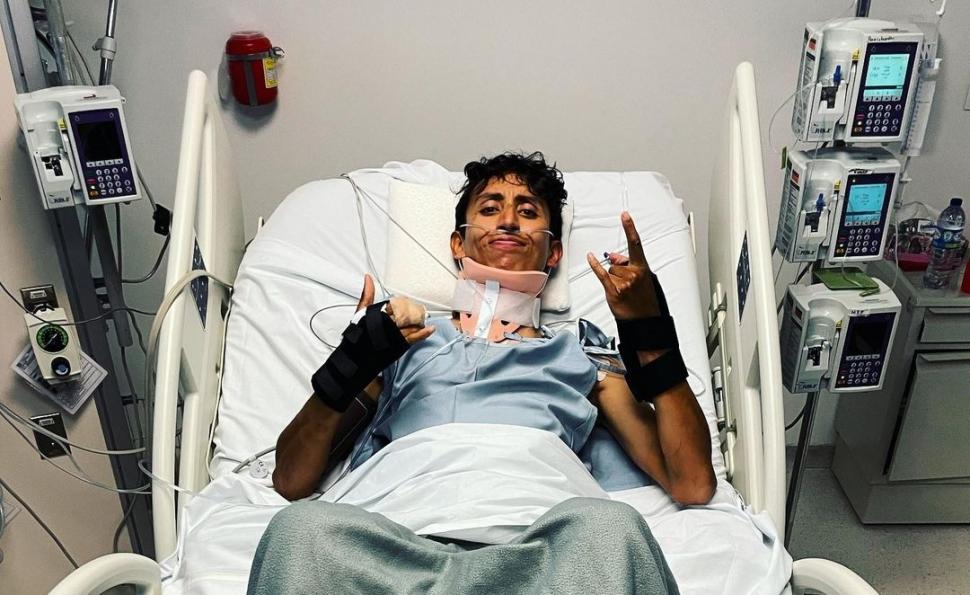
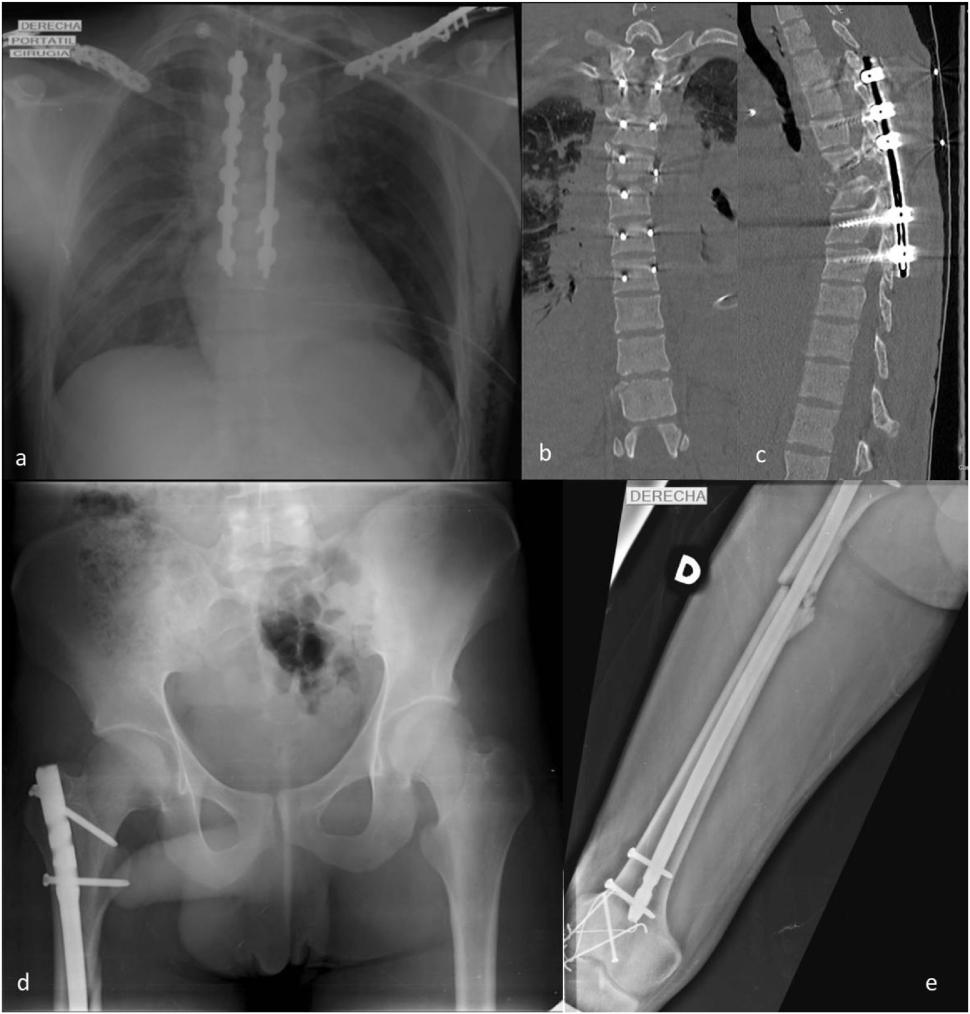
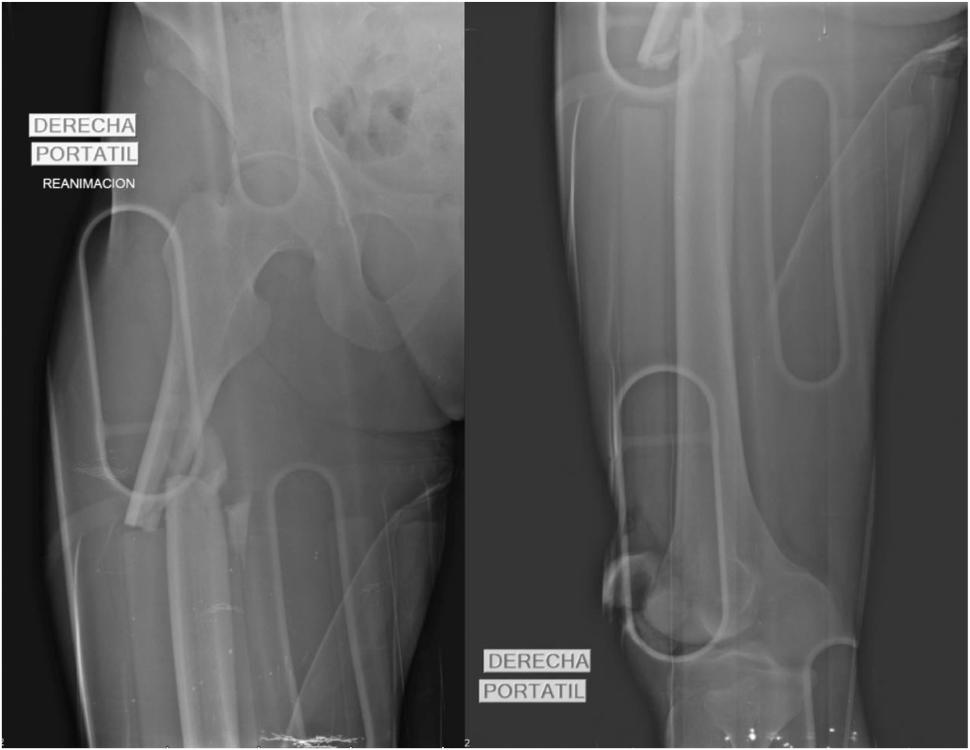
Add new comment
34 comments
This is more a case review, than a research paper, FWIW.
Seems odd that, these days, you can't have some kind of front mounted camera linked to a mobile mounted on the bars so that you get a clear view of the road even with your eyes looking basically straight down, which would counter those otherwise very reasonable misgivings about tt bikes.
There are dozens of such cameras available, many with handlebar mounts, that can transmit wirelessly to a mobile phone which could easily be fixed with a quadlock or similar to a Garmin mount. Pretty cheap too. Why they are not used is anybody's guess, I suppose like most people riders aren't very good at admitting to themselves that they need precautions against them making basic errors?
The problem with using a mobile is the image would be quite small and there would be a delay in recognising a hazard. The camera technology needs to be developed to project on a viewing screen that is part of the helmet visor. However, there may still be a slight delay while the brain computes that the hazard is straight ahead and not below. Perception can do funny things in a panic/ alarm situation.
Maybe something like the Garmin Varia then but facing forward with hazard warnings of approaching vehicles?
Possibly, but I think there will still be a time delay between receiving a warning and looking and the brain processing the image.I guess cycling teams & helmet manufacturers are working hard to come up with a solution which will allow their riders to train on open roads in the extreme head down position.
There will be a delay with anything the human brain is asked to process, but the Varia identifies hazards up to 140m away and shows them on the head unit. A front-facing system would work very well for TT bikes I believe, although it would have to be adapted as at present it doesn't give warnings of stationary objects, so it wouldn't have prevented Bernal riding into that bus.
Or even a suitably placed mirror
I wonder how the outcome would have compared if he had crashed and been treated in the UK? I am currently queuing outside my local health centre to try to make an appointment to see a practitioner, in order to then make an appointment for a routine blood test (a bit like getting an equity card).
I came off my bike just before Christmas and broke my femur. The care was excellent and I'm back on the bike, albeit with more rehab to be done.
Probably equally good or better.
The NHS is still close to top tier for emergency treatment, its the follow ups and continual check up where things can go wrong (but mostly still dont).
Routine care is struggling a bit more.
When I was knocked off my bike I had excellent medical care, including repeated bouts of CPR, doses of high quality pain relief and a flight in a helicopter.
According to my wife - I was out of it due to pain and medication - I had several xrays and other scans, prior to around 6 hours in surgery while the put my left ulna back together and rebuilt my left patella as its supposed to be in one bit and not four.
They couldn't do much for the 11 broken ribs, the 3 fractured vertebrae, the TBI; all they could do with the internal bleeding was watch and see, while keeping me on a mix of respirator and high-flow air for the punctured lung.
4 days after nearly not making it home, and while still in HDU, the physio had me up on a pulpit walking aid ... which was fun as I couldn't put any weight on either my left arm or left leg.
A week later, and I'm scooting around on a single crutch - ok, scooting is maybe the wrong world. I meant crying in frustration from not being able to do anything myself.
I spent 4 months having 2 hours or physio, twice a week.
That was eventually dropped to an hour a week over the next 14 months.
In that time, I also received additional surgery, and physiatrist care.
If you get seriously hurt ... the UK is probably the best place in the world to be.
Routine care ... maybe no so much.
You will not be bankrup if you fall off and have a big one in UK unlike many other places on this planet, that is allways a big plus point for the NHS as the care you get is not limited by a accountant saying yes or no to what is given at time of need.
Absolutely..
The heloevac followed by the week in HDU would have been horrific... let alone the cost of the surgery, drugs, the closure of a motorway sliproad and the police that that entailed [I got wiped out on a road that runs parallel with a motorway. The driver that hit me was aiming for the slip road].
Everytime I think about the medical treatment I received, I am absolutley glad that I'm in the UK.
Ah, TT bikes on open roads. Great idea. Who needs to be able to see where they're going?
Depends how you ride them. The current trend among many pros is to ride in a track style looking down at the front wheel. Ok for racing on closed roads, but not when sharing with traffic, parked cars etc.
Or pedestrians. Chris Froome
killedseriously injured a man earlier in his career when he crashed into the man as he crossed the road, when Chris was ridingback fromto see a race on his TT bike. And then he badly injured himself again crashing a TT bike into a wall.His crash into the wall was caused by him taking his hands off the bars to clear his nose when his wheels were caught by a gust of wind, could have happened just as easily on an ordinary bike with deep wheels. He didn't kill a pedestrian, he crashed into a 72-year-old when he was on a solo training ride (not riding back from a race) in Italy, the pedestrian suffering serious but not life-threatening injuries; I'm quite willing to stand corrected but as far as I remember there was no indication that he was on a TT bike, and the lack of any action against him following a police investigation would appear to indicate that fault was not attributed to him.
Rendel is correct
https://www.cyclingnews.com/news/froome-hits-pedestrian-in-italian-train...
I've quoted Chris' account. Point stands that pedestrians are also a risk if you're in the TT position, with view impinged if not fully head-down (note Chris' words that he thought he'd killed the man "with my helmet" - suggestive of a head down position).
If I am riding in a TT and see a potentially dangerous situation such as an oncoming car overtaking, a pedestrian near a zebra crossing, or a blind bend, I slow and come out of the TT position, so my hands are near the brake levers. Not having my head in the extreme track pursuit position allows me to see the dangerous situation developing in the first place. I imagine most club TT riders do the same.
Ok, my memory of the book is off. He was indeed on a training ride, not back from a race - but he was cycling to see the end of the Paris-Nice Time Trial stage. He *was* on his TT bike, in the TT position. He did initially think he had killed the old man. Thankfully, he had not, however the old man was seriously injured, including a fractured skull. And he was fined by the police. Relevant quotes from the book:
Where does he say he was in the TT position? He says he was easing up in heavier traffic so he was most likely not in the aero position on the skis and he says he saw the old man as soon as he stepped in front of him. The sanction from the police is, as explained, due to presumed liability. So, yes you're right about the fact that he was riding a TT bike, you're wrong that he killed someone, you're wrong to say that he was in the TT position and you're wrong to say that the bike he was riding stopped him seeing the pedestrian or that it contributed to the accident. May I suggest a bit more care and research before making such serious statements as accusing a rider of killing someone might be appropriate?
He says " I needed practice in the time-trial position." and the context is they were busy with an effort, Adam tucked in. I misremembered about him having killed the man - cause his original words were that he thought he had, and I guess that stuck in my brain, apologies Chris - but he DID cause _very serious_ injuries to a pedestrian, while on a TT bike.
I was replying to a comment about the dangers of training on TT bikes on the open road. And Chris Froome's accident surely is a valid data-point to back that argument up. (Never mind the other, later, recon accident into the wall).
From the text you quoted: We were coming towards the bor-
der and just as I began to ease up, the road
got a little busier. There was a cafe/liquor
store on the right, cars parked along the
road, but nothing dangerous until an older
man suddenly stepped out from behind one
of the cars, directly into our line.
You say that he caused very serious injuries to the pedestrian, if his account is true the pedestrian caused very serious injuries to himself by stepping straight into the road from behind a parked car in front of two cyclists. I tend to agree with you that TT training on the open road is undesirable, certainly in urban areas, but there is nothing in the account you've shared nor in any other information I've seen that suggests that the use of a TT bike was a contributory factor.
At least this guy is getting paid and I suppose well enough. Others do it for free.
The strength of character required to recover is quite astonishing. That he can ride a bike at all shows incredible determination.
Has he fully recovered though, and will he ever?
Whilst superhuman compared to the rest of us he seems to have lost that 0.1% that is the difference between good and great. A bit like Frome but tantalisingly close to his old form.
Yes, and no. He's said in an interview that his numbers are back to his pre-crash levels but the sport has moved on.
So some combination of not quite getting to his peak (he was still young when he crashed), staying at Ineos rather than moving to UAE/Jumbo who are the new Sky* in terms of getting the best out of riders and maybe at the margins not being able to dig out the last percent for whatever reason.
Froome on the other hand was never even remotely the same again.
* I daresay someone will draw a parallel with the two other American riders who found a different sport on their return from absence but to be clear I'm not saying UAE/Jumbo are doing anything they shouldn't be.
Thoughtful response - thank you!
Pages